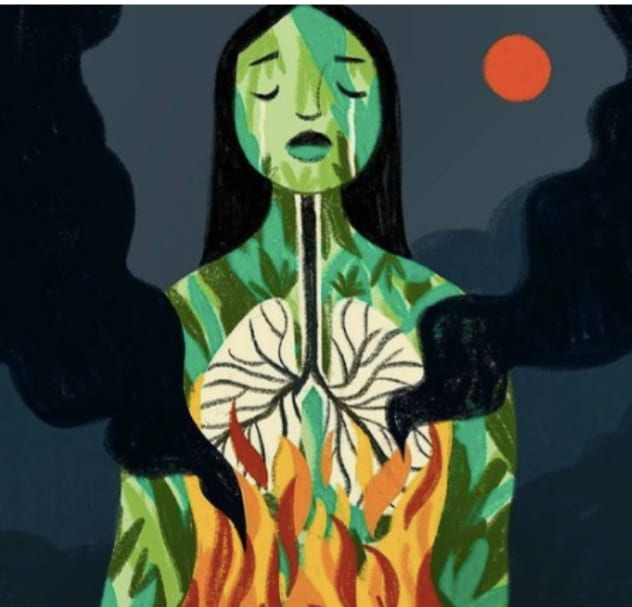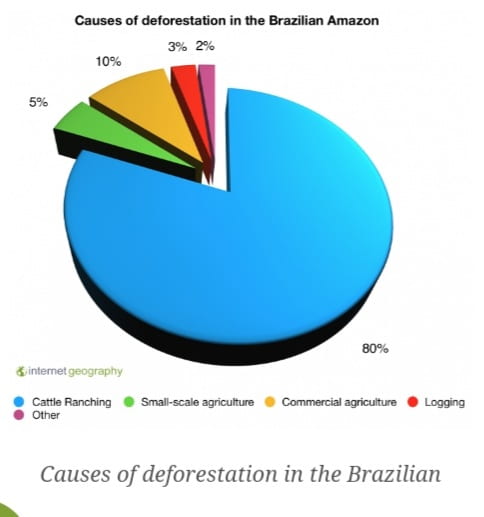
After a long flight above the hills and mountains from Paraguay to Brazil, I decided to swoop down and dive into the nearby placid lake. Take a cool shower and perch peacefully on a lush green leafy tree dripping with sap whereas its branches and leaves cover the ground with its large canopy. One could hear the tweeting of birds and squeaking of small animals hopping and playing around. The moment I entered my favourite spot to rest, I listened to a few strange buzzing sounds whirring, clanking, clattering and beeping of jeeps. I was paralyzed and unable to process what was going on for a few moments. The small animals and birds were in a state of commotion, finding shelter for themselves. I saw a few men wearing jackets holding axes, chainsaws, and tree loppers and moved dramatically to cut the long, primeval tree. Within a few minutes, the lofty tree that used to be home to many birds and animals took its last breath.
This scene is not new to Brazil and countries which have been adversely affected by deforestation due to human activities. Deforestation is one of the hot-button issues faced in Brazil and other countries such as Indonesia, the Philippines, Benin, Nigeria etc. According to figures published by the Food and Agricultural Organization from 1990 to 2021, the area of primary forests decreased by more than 80 million hectares. Deforestation in the Amazon Forest is just like a starved dragon. The percentage of deforestation in the region declines 70 percent from 2005 to 2014 using different strategies. However, this sleeping monster woke up from its slumber in 2016. On November 29 the Brazilian government issued data on deforestation showing that an area of forests equivalent to ten times the size of New York City was devastated by deforestation.
The Amazon, home to many rare species and indigenous tribes for thousands of years is under a considerable threat due to increasing demand for timber and growing crops, commercial farming and settlement.

Illegal logging:
The pie chart below shows the trend of deforestation in the Brazilian Amazon.

From this, we can notice that commercial logging is responsible for only 3 percent of deforestation. Illegal logging usually takes place in search of valuable trees like Mahogony and Teak, sold to companies and other countries to make wood furniture and decoration pieces. By 2020 more than three-quarters of forests cleared in the Amazon were due to cattle ranching. Deforestation leads to the destruction of the nutrient cycle that declines the quality of the pastures.

Commercial farming:
Crops such as soya beans and pineapples are grown by clearing a large area of these rainforests. The majority of clearance for commercial farming has occurred to make way for soya bean cultivation.
Actions taken to prevent the crisis:
Increase in the number and coverage of protected areas: The Federal Government demarcated 114 indigenous areas totalling 44 million hectares, created 25 million hectares of conservation areas, and urged the state governments to create another 25 million hectares in state-level conservation areas.
The implementation of DETER was game-changing. The system was the first of its kind used for monitoring vegetation over such a vast geographical area and in near-real-time. It not only allowed the environmental police to spot illegal activity throughout the entire Amazon, but it did so with unprecedented speed. At the UN climate summit in 2021, 141 countries including Brazil signed a pledge to end deforestation by 2030.
We can grapple this monster with its horns and stabilize the climate by adopting a few practices listed below.
1:Buy only sustainable wood products.
2:Practice eco-forestry.
3:Use recycled products.
4:Help restore degraded forests.
5:Report illegal logging.
6: Enforcing laws that protect the rainforests and all of the species that reside in them.
We must unite,
As it is nature’s right,
If we work together,
Nature can live forever